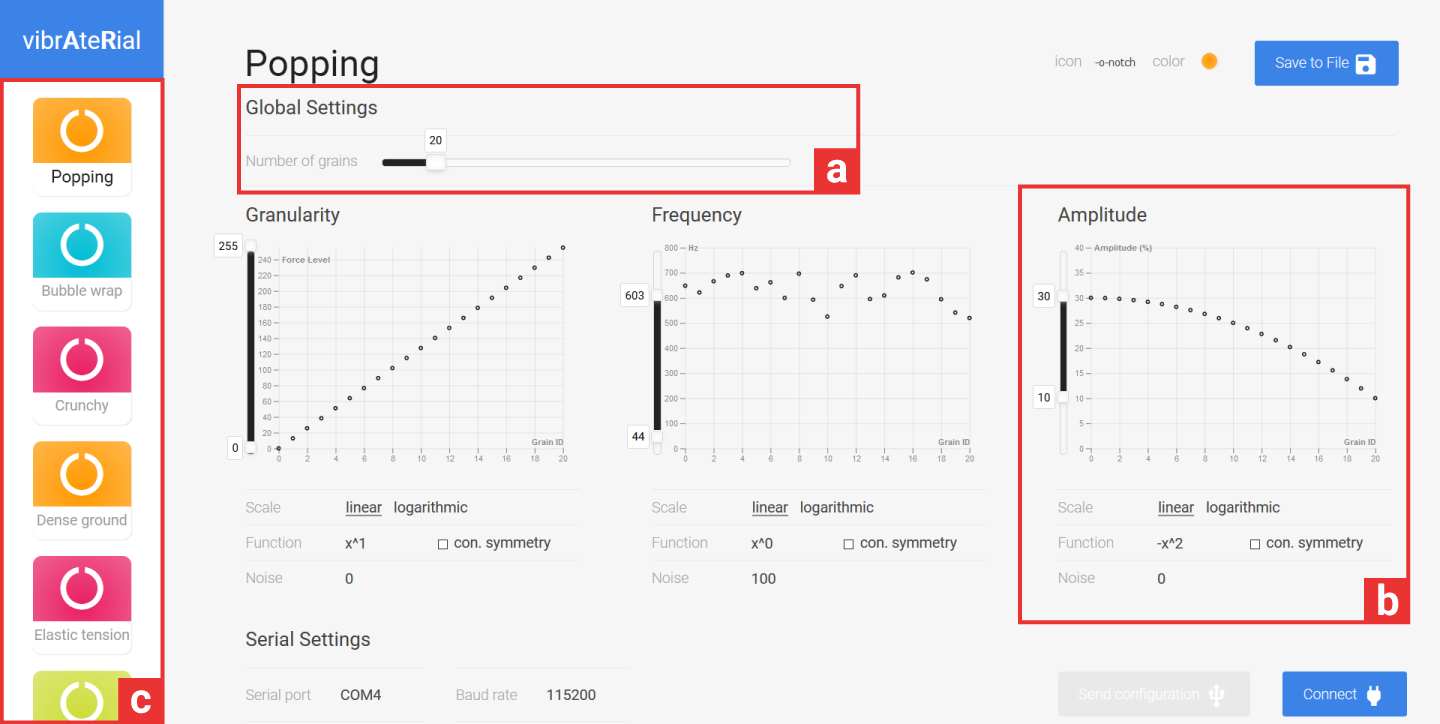vibrAteRial

Tool Summary
| Metadata | |
|---|---|
| Release Yearⓘ The year a tool was first publicly released or discussed in an academic paper. | 2020 |
| Platformⓘ The OS or software framework needed to run the tool. | NodeJS |
| Availabilityⓘ If the tool can be obtained by the public. | Available |
| Licenseⓘ Tye type of license applied to the tool. | Open Source (GPL 3) |
| Venueⓘ The venue(s) for publications. | ACM UIST |
| Intended Use Caseⓘ The primary purposes for which the tool was developed. | Virtual Reality, Hardware Control |
| Hardware Information | |
|---|---|
| Categoryⓘ The general types of haptic output devices controlled by the tool. | Vibrotactile |
| Abstractionⓘ How broad the type of hardware support is for a tool.
| Bespoke |
| Device Namesⓘ The hardware supported by the tool. This may be incomplete. | bARefoot |
| Device Templateⓘ Whether support can be easily extended to new types of devices. | No |
| Body Positionⓘ Parts of the body where stimuli are felt, if the tool explicitly shows this. | Foot |
| Interaction Information | |
|---|---|
| Driving Featureⓘ If haptic content is controlled over time, by other actions, or both. | Action |
| Effect Localizationⓘ How the desired location of stimuli is mapped to the device.
| Device-centric |
| Non-Haptic Mediaⓘ Support for non-haptic media in the workspace, even if just to aid in manual synchronization. | None |
| Iterative Playbackⓘ If haptic effects can be played back from the tool to aid in the design process. | Yes |
| Design Approachesⓘ Broadly, the methods available to create a desired effect.
| Direct, Procedural, Library |
| UI Metaphorsⓘ Common UI metaphors that define how a user interacts with a tool.
| Generic Menu |
| Storageⓘ How data is stored for import/export or internally to the software. | Custom JSON |
| Connectivityⓘ How the tool can be extended to support new data, devices, and software. | None |
Additional Information
VibrAteRial is designed to create underfoot material effects in VR for the bARefoot shoe system. Each bARefoot contains a pressure sensor and vibrotactile actuators. Using the authoring tool, designers create virtual materials by controlling vibration grains that trigger as the bARefoot wearer steps down on the shoe. Users can control the distribution of these grains as a function of pressure, and the frequency and amplitude of each grain. These can be sent to a bARefoot so that the material can be tested and refined.
For more information on this or bARefoot, consult the UIST’20 paper and the Git repository.